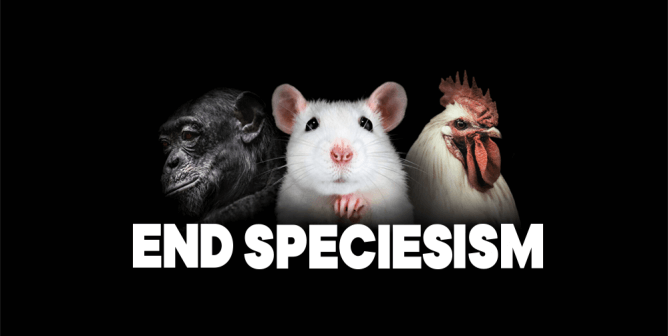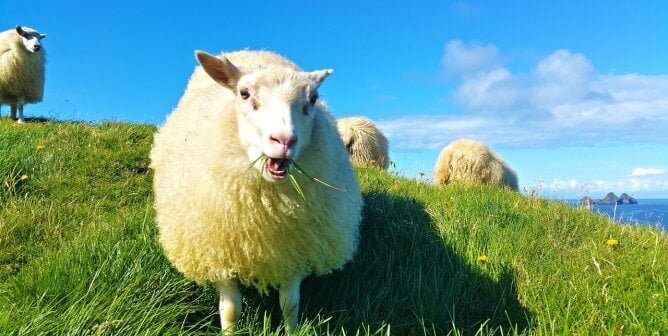This Is How Goats Suffer and Die for Mohair Sweaters and Hats
What Is Mohair?
Mohair is a long, smooth fiber used in sweaters, hats, and other fluffy accessories. You may recognize the word but be unfamiliar with how it’s actually obtained, but be warned: As with all animal-derived textiles, the production of mohair garments involves suffering and slaughter.
Mohair is taken from angora goats. Maybe you’ve heard of angora before, but if you see the word “angora” (or “angora wool”) on a clothing tag, don’t confuse that with mohair. Angora wool is an entirely different material that’s violently obtained from rabbits.
Most of the world’s mohair originates in South Africa and the U.S. (particularly Texas). Angora goats are bred primarily for their soft inner coats, which are generally shorn twice a year, beginning as early as six months after birth. But the problems with mohair begin well before then, and they continue until the day the goats are slaughtered.
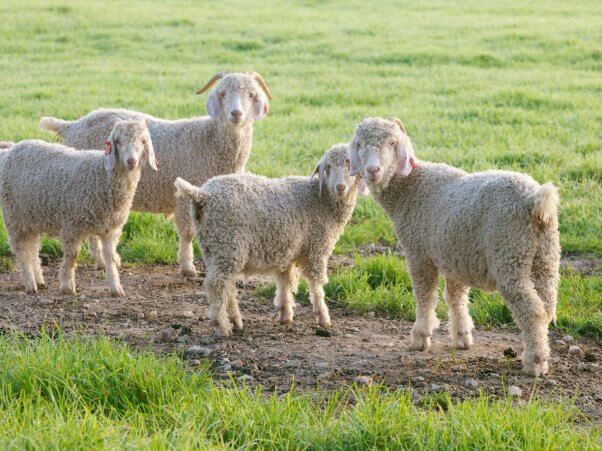
Here’s why you should never buy or wear mohair:
Painful Dehorning
Workers dehorn baby goats when they’re 1 or 2 weeks old, typically by burning their horns off with a hot iron or applying a caustic chemical paste, which can cause severe burns or blindness if it gets on the animals’ skin or into their eyes. Males also endure painful testicle removal using rubber rings, which can leave them in distress for days and often leads to tetanus infection. These procedures are usually carried out without any pain relief.
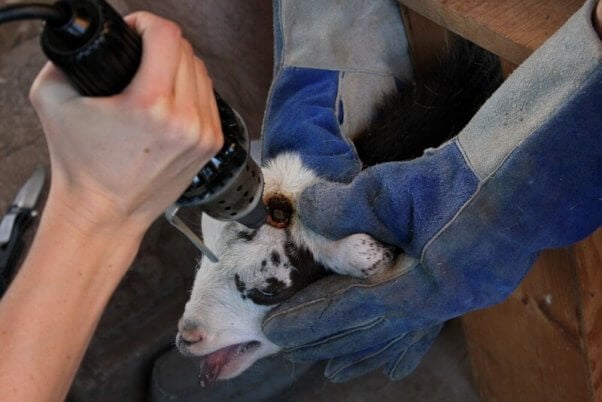
Rough Handling
A PETA Asia eyewitness investigation of 12 angora goat farms in South Africa—the world’s top mohair producer—documented workers dragging goats by their horns and legs, throwing them across the floor, mutilating them, and even cutting the throats of fully conscious ones. Some shearers lifted the goats up off the floor by the tail, likely breaking it at the spine.
Goats are prey animals, which means that being pinned down during the shearing process is especially terrifying for them. Goat kids who were being shorn for the first time were heard screaming in pain and fear.
Workers in the mohair trade are paid by volume, not by the hour, so they’re driven to work quickly and carelessly. Shearers cut broad swaths of skin off some animals—and crudely stitched up the most gaping wounds right there on the filthy shearing floor, without providing any pain relief whatsoever.
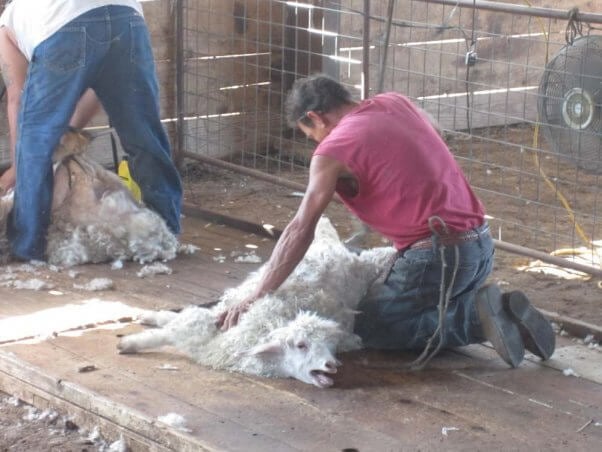
Neglect
Angora goats are so sensitive to temperature differences that summer winds and rain can kill them, even when temperatures aren’t low. Shearing them in the winter causes many goats to die of pneumonia. They also experience high mortality rates when they’re left without shelter after shearing, which many of them are. One worker told PETA Asia’s eyewitness that in just one weekend, 40,000 goats died of exposure across South Africa. Another said that up to 80 percent of goats die after shearing on some farms.
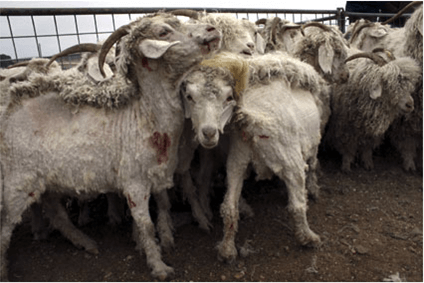
Slaughter
Goats are killed as soon as they’re no longer useful to the industry—well short of their natural 10-year life expectancy. They’re often shorn one final time before being sold for meat, or they may be slaughtered for their skin, which is used to produce clothing, rugs, and other items. PETA Asia’s exposé documented that one worker sawed through goats’ throats with a dull knife and then broke their necks. Other goats were hauled to a slaughterhouse, jolted with electricity, hung upside down by one leg, slashed across the throat, bled, and skinned.
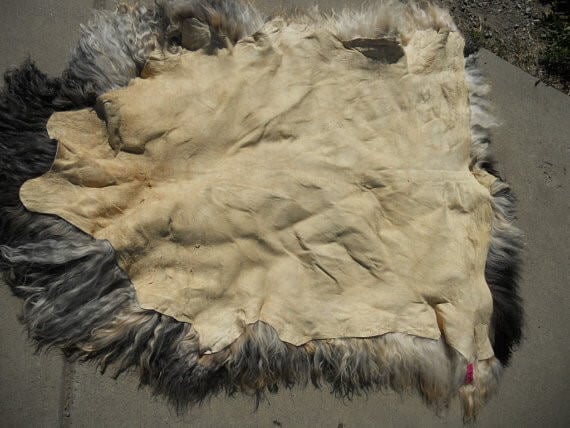
If you purchase mohair, you’re also supporting an industry that slaughters goats for meat and wreaks further destruction on the environment. As mohair sales increase, the market for angora goat meat also expands—particularly for kid meat (yes, it’s just as horrifying as it sounds). What’s more, to produce 1 pound of mohair, goats must be fed between 40 and 50 pounds of high-quality feed that was grown on land that could’ve been used to grow crops for human consumption instead.
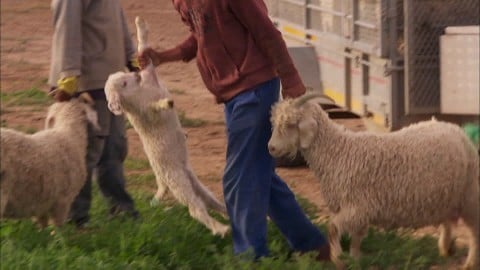
Leave mohair—and all animal-derived materials—off your shopping list!
There’s no excuse for supporting an industry that abuses and kills millions of goats every year, especially when there are plenty of warm, cozy, and stylish fabrics available that aren’t made from mohair. Please join the millions of people all over the world who know that compassion is always in fashion. Leave animal hair and skins out of your wardrobe, and join the vegan fashion revolution today. Check out the links below to find winter-ready looks that are entirely animal-free:
